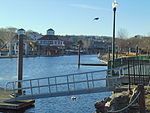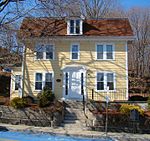Three Rivers Community College (Connecticut)
1992 establishments in ConnecticutBuildings and structures in Norwich, ConnecticutCommunity colleges in ConnecticutEducational institutions established in 1992Universities and colleges in New London County, Connecticut ... and 1 more
Use mdy dates from April 2012
Three Rivers Community College (TRCC) is a public community college in Norwich, Connecticut. It was formed in 1992 by the merger of Mohegan Community College and Thames Valley State Technical College and is named after the three major rivers in the region: the Shetucket, the Yantic and the Thames. It is accredited by the New England Commission of Higher Education.
Excerpt from the Wikipedia article Three Rivers Community College (Connecticut) (License: CC BY-SA 3.0, Authors).Three Rivers Community College (Connecticut)
New London Turnpike, Norwich Thamesville
Geographical coordinates (GPS) Address Phone number Website External links Nearby Places Show on map
Geographical coordinates (GPS)
| Latitude | Longitude |
|---|---|
| N 41.5106 ° | E -72.1028 ° |
Address
Three Rivers Community College
New London Turnpike 572
06360 Norwich, Thamesville
Connecticut, United States
Open on Google Maps










